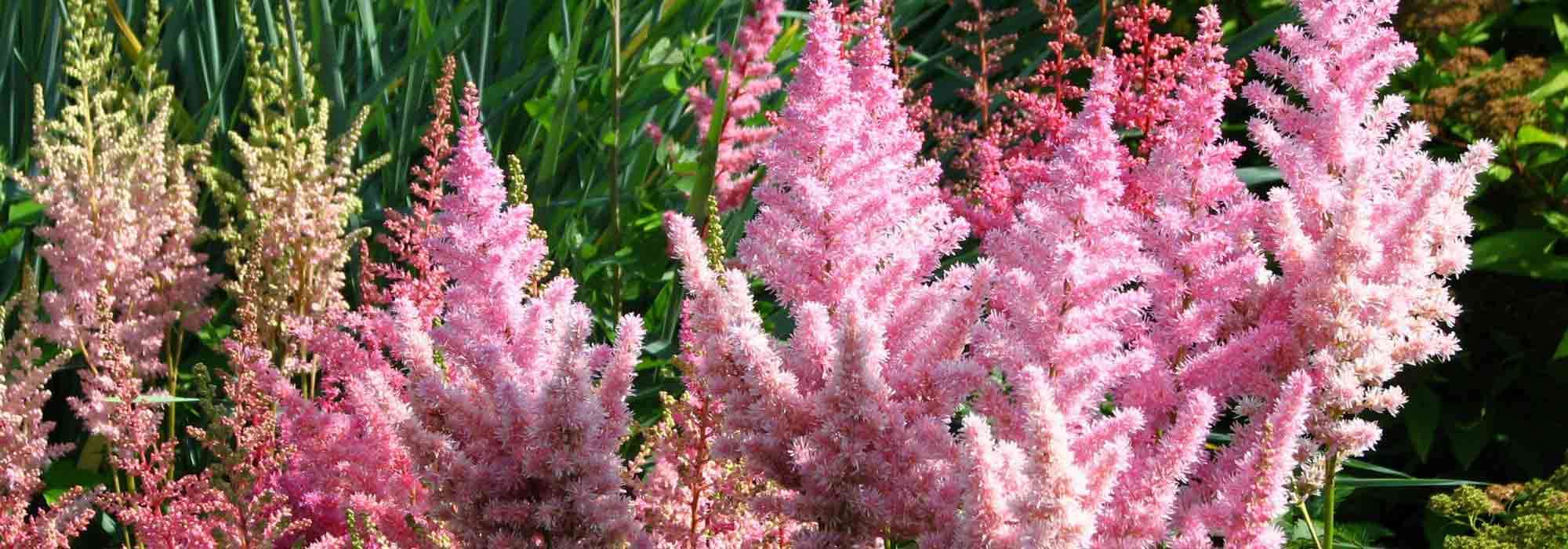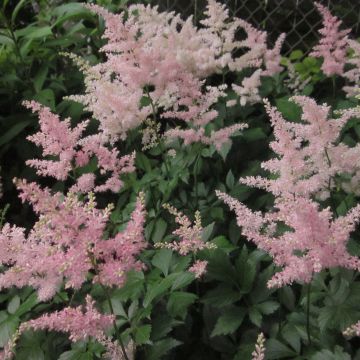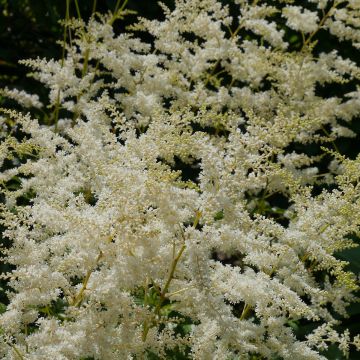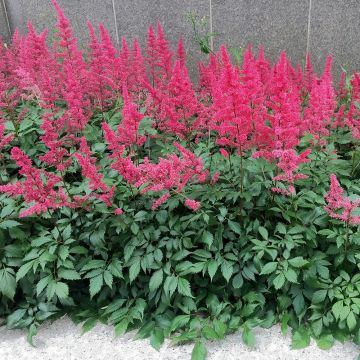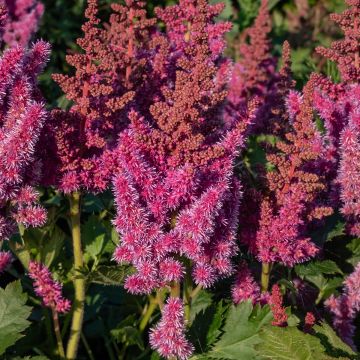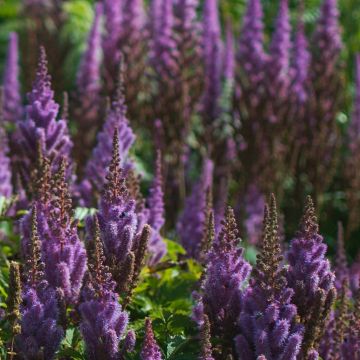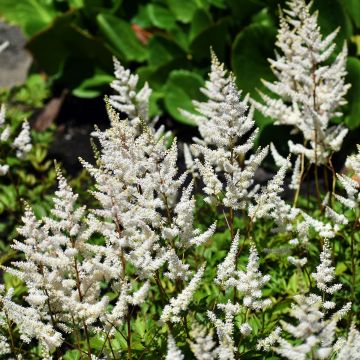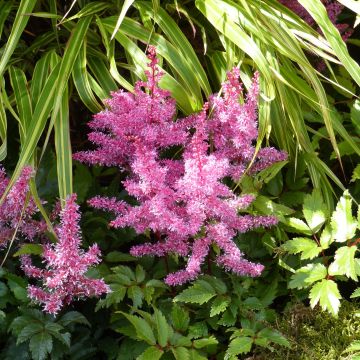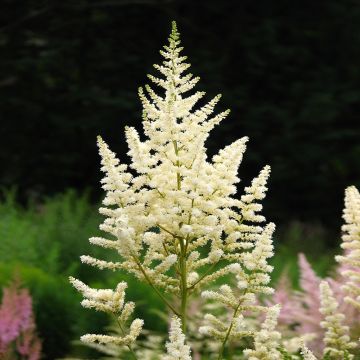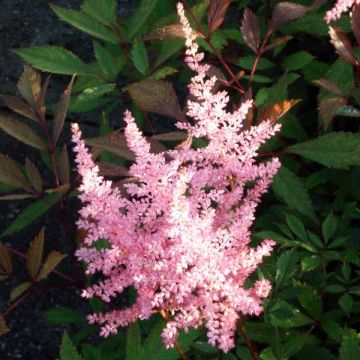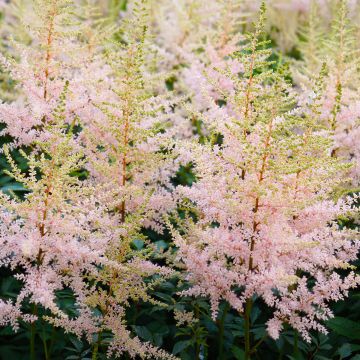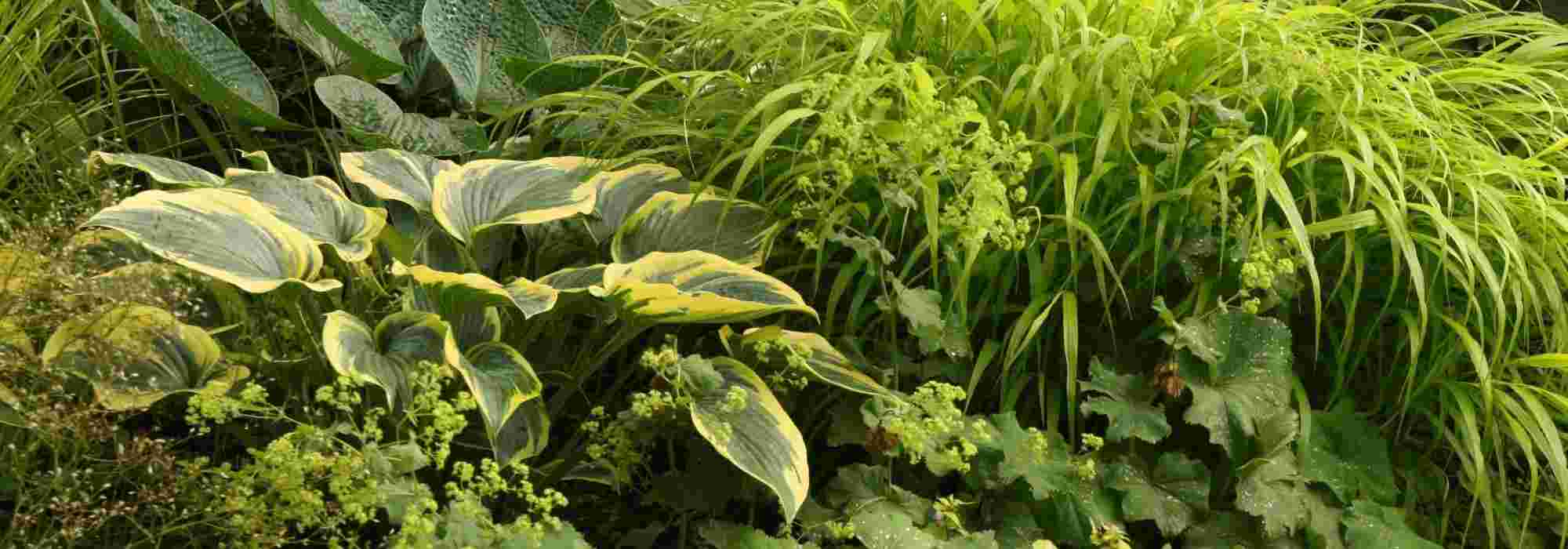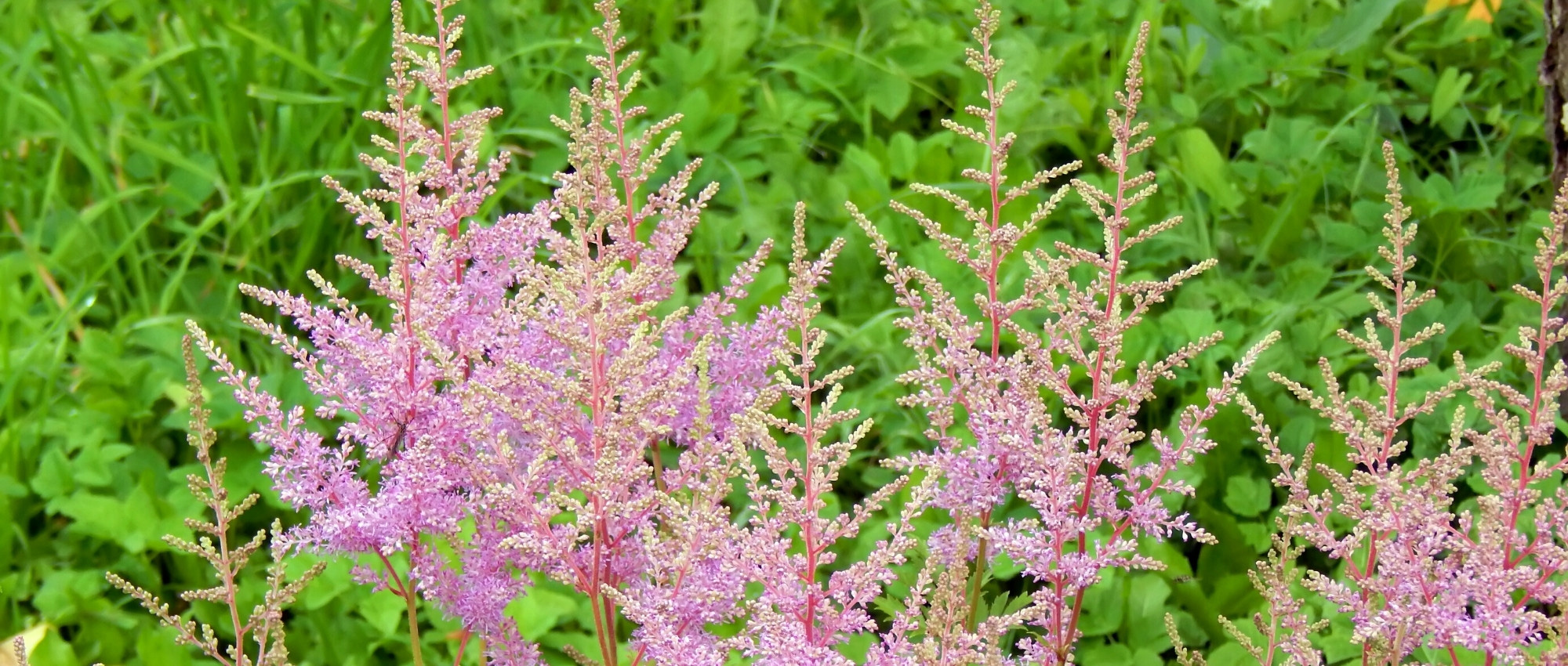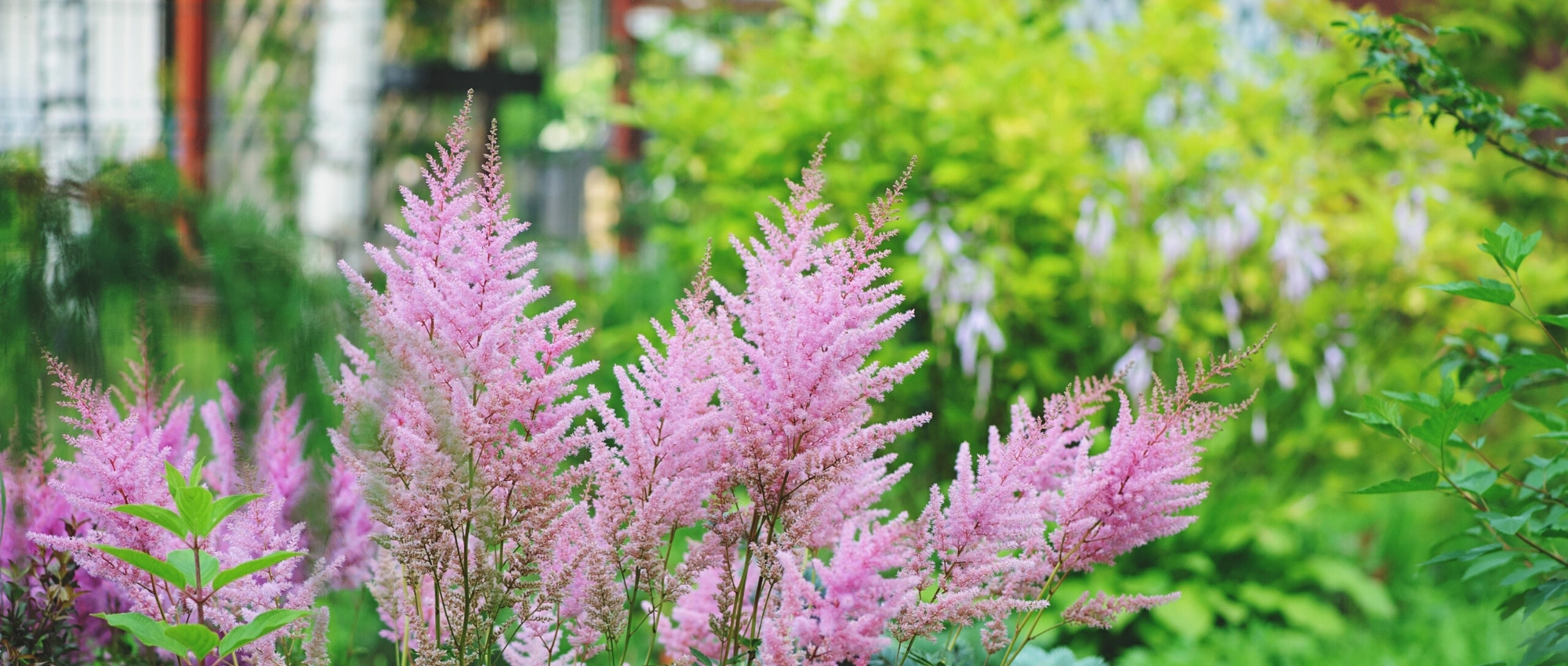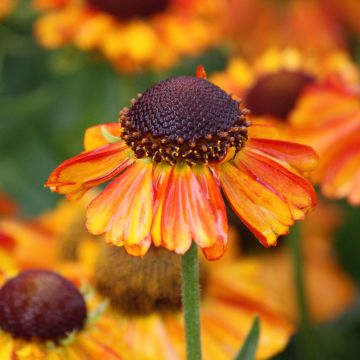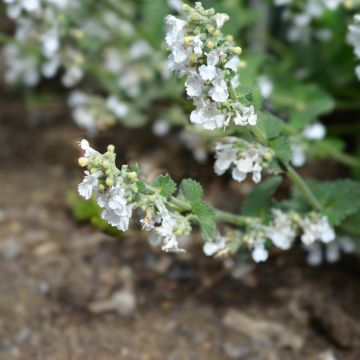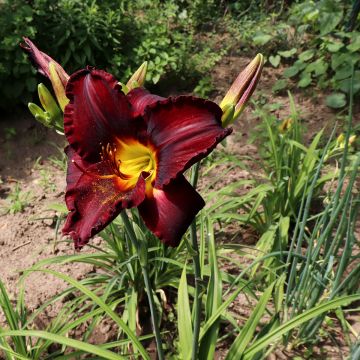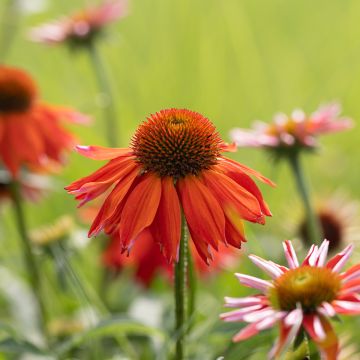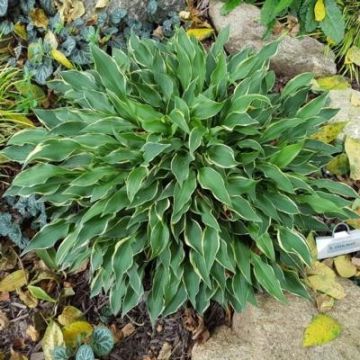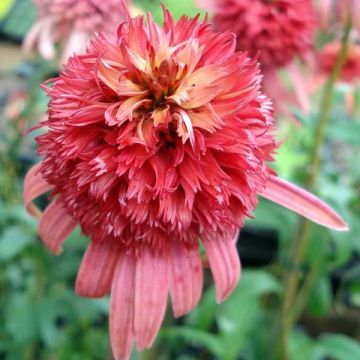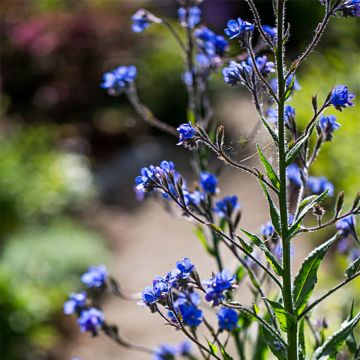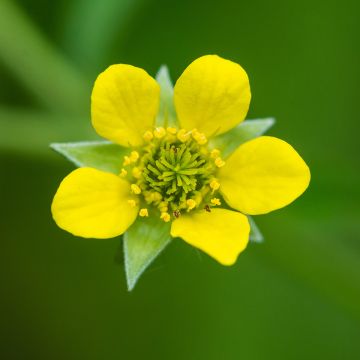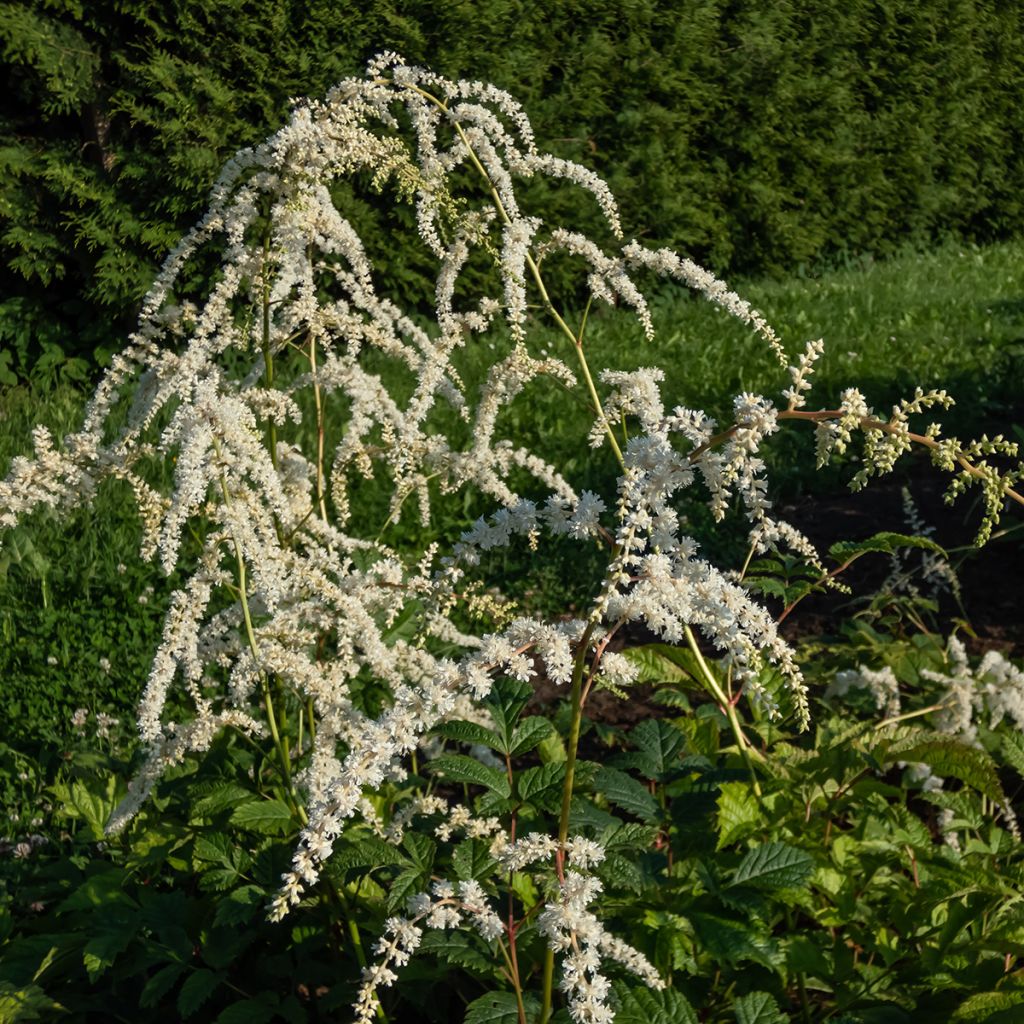

Astilbe thunbergii 'Professor van der Wielen'
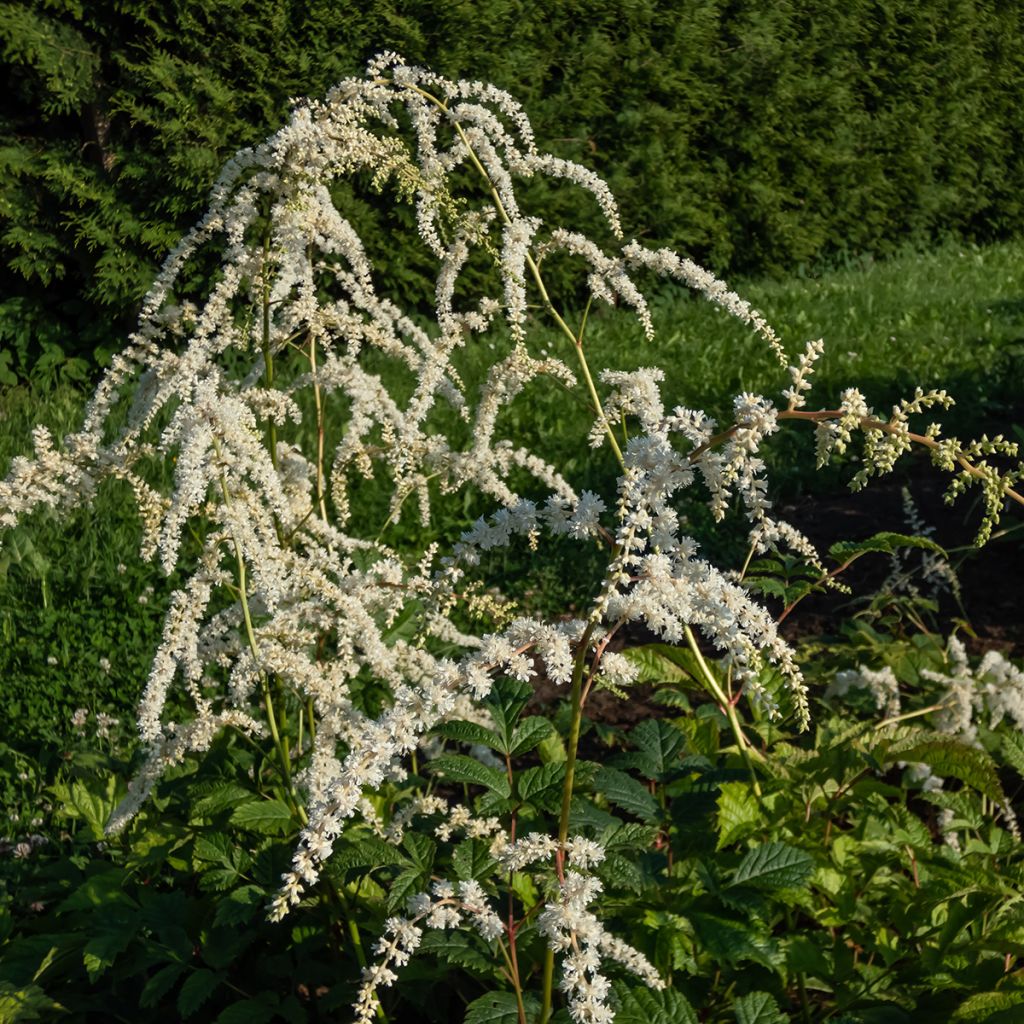

Astilbe thunbergii 'Professor van der Wielen'
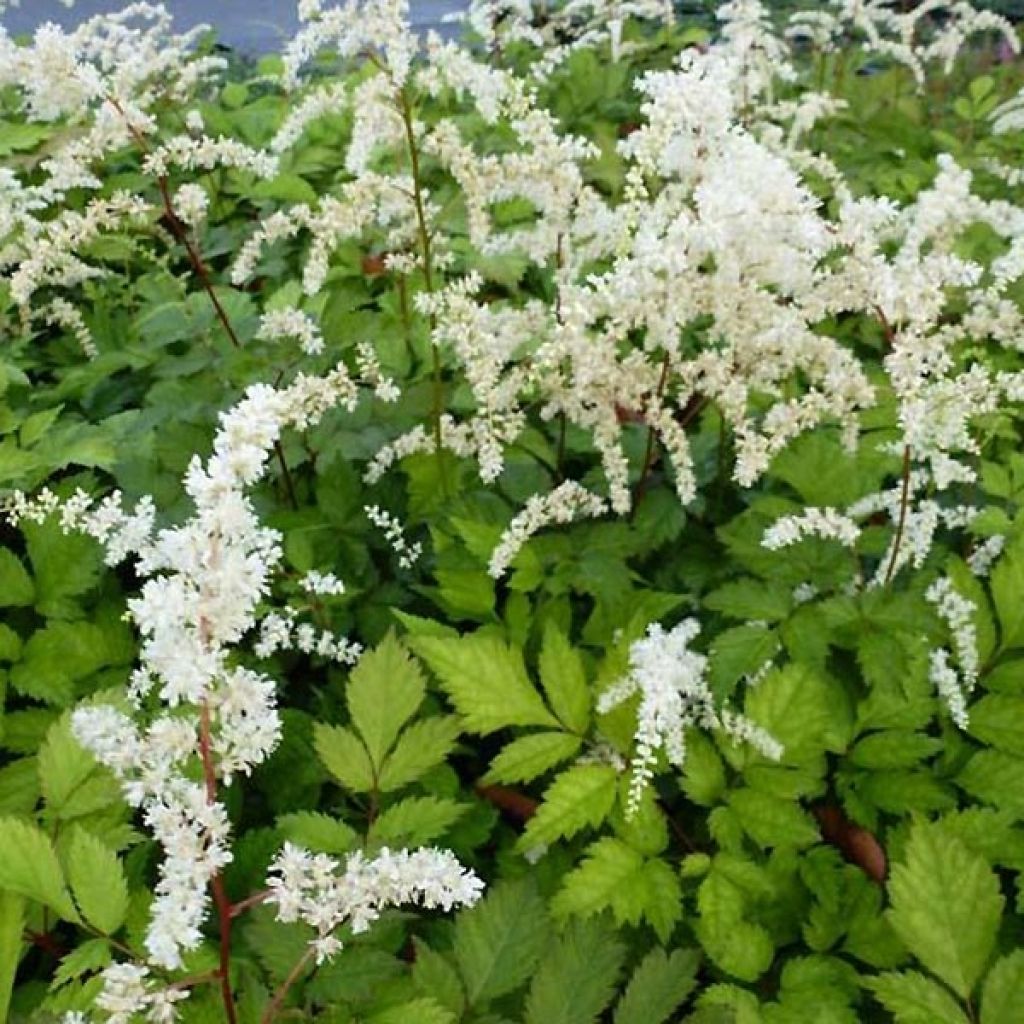

Astilbe thunbergii 'Professor van der Wielen'
Astilbe thunbergii 'Professor van der Wielen'
Astilbe thunbergii Professor van der Wielen
Thunberg's Astilbe, False Goat's Beard
Special offer!
Receive a €20 voucher for any order over €90 (excluding delivery costs, credit notes, and plastic-free options)!
1- Add your favorite plants to your cart.
2- Once you have reached €90, confirm your order (you can even choose the delivery date!).
3- As soon as your order is shipped, you will receive an email containing your voucher code, valid for 3 months (90 days).
Your voucher is unique and can only be used once, for any order with a minimum value of €20, excluding delivery costs.
Can be combined with other current offers, non-divisible and non-refundable.
Home or relay delivery (depending on size and destination)
Schedule delivery date,
and select date in basket
This plant carries a 12 months recovery warranty
More information
We guarantee the quality of our plants for a full growing cycle, and will replace at our expense any plant that fails to recover under normal climatic and planting conditions.
Does this plant fit my garden?
Set up your Plantfit profile →
Description
Astilbe thunbergii 'Professor van der Wielen' is an excellent variety of astilbe, elegant and floriferous. Bending gracefully over its beautiful fern-like foliage, assembled in a light tuft, finely ramified white floral panicles, with a feathery appearance, appear and bloom in summer. This perennial brings a touch of magic to shady, moist areas where it thrives, ideally near water sources. On the terrace, it does well in a large pot kept fresh. Its flowers remain very attractive in dried bouquets.
The 'Professor Van der Wielen' Astilbe is a thunbergii hybrid, and as such, it is a vigorous variety recognized by its fine, trailing inflorescences, which give it a characteristic silhouette. Like all Astilbes, it belongs to the Saxifragaceae family and has Japanese origins. It is a perennial with a rhizomatous stump of beautiful stature, forming a wide, airy tuft from spring onwards, with a flexible habit. It consists of leafy stems. The leaves of this Astilbe are divided into dentate leaflets, with a shiny dark green colour and covered in brown hairs. At maturity, this variety, 'Professor van der Wielen, will reach about 1m (3ft) in height when flowering, and it will spread over 80cm (32in) to 1m (3ft). Flowering takes place in July-August, more or less early depending on the climate. In autumn, the deciduous foliage takes on pretty reddish or bronze hues. The above-ground vegetation dries up and dies in winter and regrows in spring.
Astilbe thunbergii 'Professor Van der Wielen' is a preferred inhabitant of humid and semi-shaded areas. It beautifully accompanies ferns, bearded irises, Rodgersias, and obedient plants (Physostegia virginiana) in slightly sunnier exposures near ponds and basins. This plant does not tolerate lack of water, but it can easily be grown in a container with adequate watering, or as an evaporative plant in flower beds or borders. Its flowers are very beautiful in floral arrangements and dried bouquets. In the undergrowth, associate Astilbes with hostas, ferns (Athyrium filix-femina), arums, and meadowsweet (Filipendula) or other waterside perennials.
Astilbe thunbergii 'Professor van der Wielen' in pictures
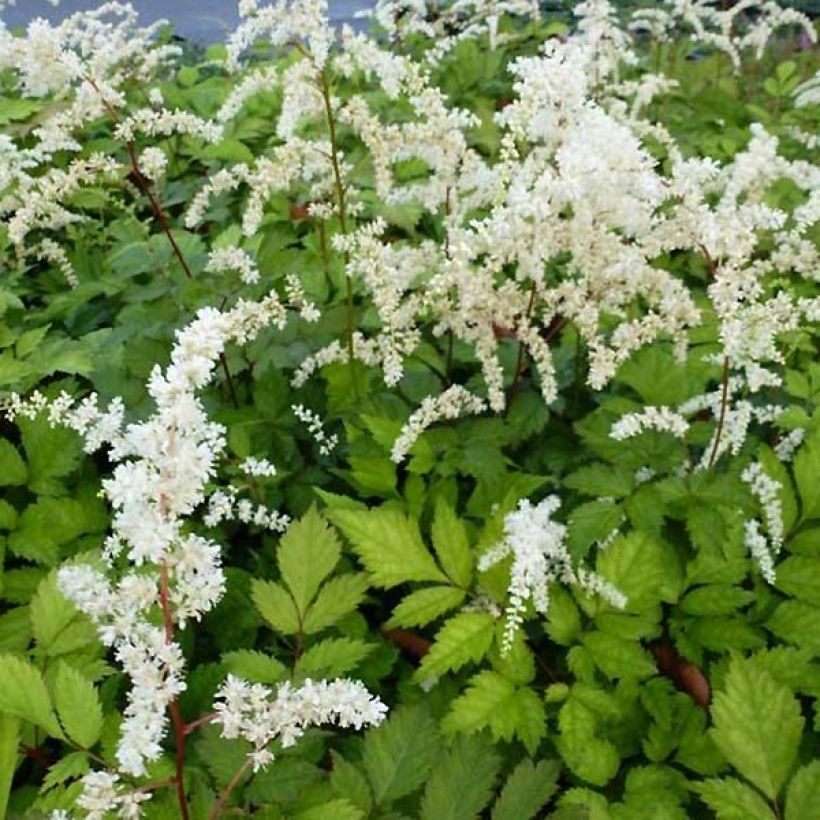

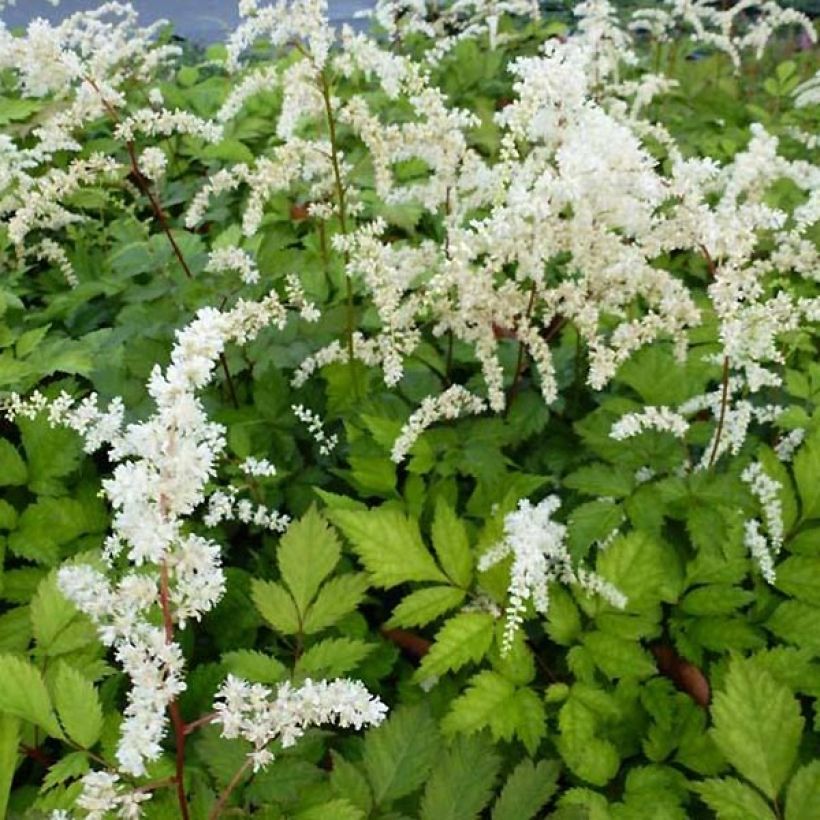

Flowering
Foliage
Plant habit
Botanical data
Astilbe
thunbergii
Professor van der Wielen
Saxifragaceae
Thunberg's Astilbe, False Goat's Beard
Cultivar or hybrid
Other Astilbe - False Goatsbeard
View all →Planting and care
Astilbe thrives mainly in partial shade and in soils that remain moist, even if they are marshy and waterlogged in summer. You can place it in a fairly gentle sunlight, but avoid the hottest hours of the day. Plant it in spring or autumn in soil rich in organic matter and make sure it never lacks water from spring until the end of summer. Avoid alkaline soils.
To install your pot, work your soil to a depth of 20cm (8in), crumbling the soil well and placing a base amendment such as dried blood or dehydrated horn at the bottom of the planting hole. Position your plant, removed from its pot, by covering the top of the root ball with 3cm (1in) of soil. Then fill in and water generously to eliminate air pockets. During dry weather, regular watering is necessary for a few weeks to facilitate root growth. Astilbe requires very little maintenance. Keep the soil moist and add compost and fertilizer in spring. In winter, be careful of flowers and young foliage, which can be damaged by spring frosts. After flowering, cut the flower stems to highlight the foliage. In November, cut back the plants to about 10cm (4in). Avoid working the soil near these plants, as the rootstocks develop on the surface. These plants are resistant to diseases and are rarely attacked by insects. While ignored by slugs, they can be susceptible to powdery mildew and fungal spots.
Planting period
Intended location
Care
Planting & care advice
This item has not been reviewed yet - be the first to leave a review about it.
Similar products
Haven't found what you were looking for?
Hardiness is the lowest winter temperature a plant can endure without suffering serious damage or even dying. However, hardiness is affected by location (a sheltered area, such as a patio), protection (winter cover) and soil type (hardiness is improved by well-drained soil).

Photo Sharing Terms & Conditions
In order to encourage gardeners to interact and share their experiences, Promesse de fleurs offers various media enabling content to be uploaded onto its Site - in particular via the ‘Photo sharing’ module.
The User agrees to refrain from:
- Posting any content that is illegal, prejudicial, insulting, racist, inciteful to hatred, revisionist, contrary to public decency, that infringes on privacy or on the privacy rights of third parties, in particular the publicity rights of persons and goods, intellectual property rights, or the right to privacy.
- Submitting content on behalf of a third party;
- Impersonate the identity of a third party and/or publish any personal information about a third party;
In general, the User undertakes to refrain from any unethical behaviour.
All Content (in particular text, comments, files, images, photos, videos, creative works, etc.), which may be subject to property or intellectual property rights, image or other private rights, shall remain the property of the User, subject to the limited rights granted by the terms of the licence granted by Promesse de fleurs as stated below. Users are at liberty to publish or not to publish such Content on the Site, notably via the ‘Photo Sharing’ facility, and accept that this Content shall be made public and freely accessible, notably on the Internet.
Users further acknowledge, undertake to have ,and guarantee that they hold all necessary rights and permissions to publish such material on the Site, in particular with regard to the legislation in force pertaining to any privacy, property, intellectual property, image, or contractual rights, or rights of any other nature. By publishing such Content on the Site, Users acknowledge accepting full liability as publishers of the Content within the meaning of the law, and grant Promesse de fleurs, free of charge, an inclusive, worldwide licence for the said Content for the entire duration of its publication, including all reproduction, representation, up/downloading, displaying, performing, transmission, and storage rights.
Users also grant permission for their name to be linked to the Content and accept that this link may not always be made available.
By engaging in posting material, Users consent to their Content becoming automatically accessible on the Internet, in particular on other sites and/or blogs and/or web pages of the Promesse de fleurs site, including in particular social pages and the Promesse de fleurs catalogue.
Users may secure the removal of entrusted content free of charge by issuing a simple request via our contact form.
The flowering period indicated on our website applies to countries and regions located in USDA zone 8 (France, the United Kingdom, Ireland, the Netherlands, etc.)
It will vary according to where you live:
- In zones 9 to 10 (Italy, Spain, Greece, etc.), flowering will occur about 2 to 4 weeks earlier.
- In zones 6 to 7 (Germany, Poland, Slovenia, and lower mountainous regions), flowering will be delayed by 2 to 3 weeks.
- In zone 5 (Central Europe, Scandinavia), blooming will be delayed by 3 to 5 weeks.
In temperate climates, pruning of spring-flowering shrubs (forsythia, spireas, etc.) should be done just after flowering.
Pruning of summer-flowering shrubs (Indian Lilac, Perovskia, etc.) can be done in winter or spring.
In cold regions as well as with frost-sensitive plants, avoid pruning too early when severe frosts may still occur.
The planting period indicated on our website applies to countries and regions located in USDA zone 8 (France, United Kingdom, Ireland, Netherlands).
It will vary according to where you live:
- In Mediterranean zones (Marseille, Madrid, Milan, etc.), autumn and winter are the best planting periods.
- In continental zones (Strasbourg, Munich, Vienna, etc.), delay planting by 2 to 3 weeks in spring and bring it forward by 2 to 4 weeks in autumn.
- In mountainous regions (the Alps, Pyrenees, Carpathians, etc.), it is best to plant in late spring (May-June) or late summer (August-September).
The harvesting period indicated on our website applies to countries and regions in USDA zone 8 (France, England, Ireland, the Netherlands).
In colder areas (Scandinavia, Poland, Austria...) fruit and vegetable harvests are likely to be delayed by 3-4 weeks.
In warmer areas (Italy, Spain, Greece, etc.), harvesting will probably take place earlier, depending on weather conditions.
The sowing periods indicated on our website apply to countries and regions within USDA Zone 8 (France, UK, Ireland, Netherlands).
In colder areas (Scandinavia, Poland, Austria...), delay any outdoor sowing by 3-4 weeks, or sow under glass.
In warmer climes (Italy, Spain, Greece, etc.), bring outdoor sowing forward by a few weeks.






























